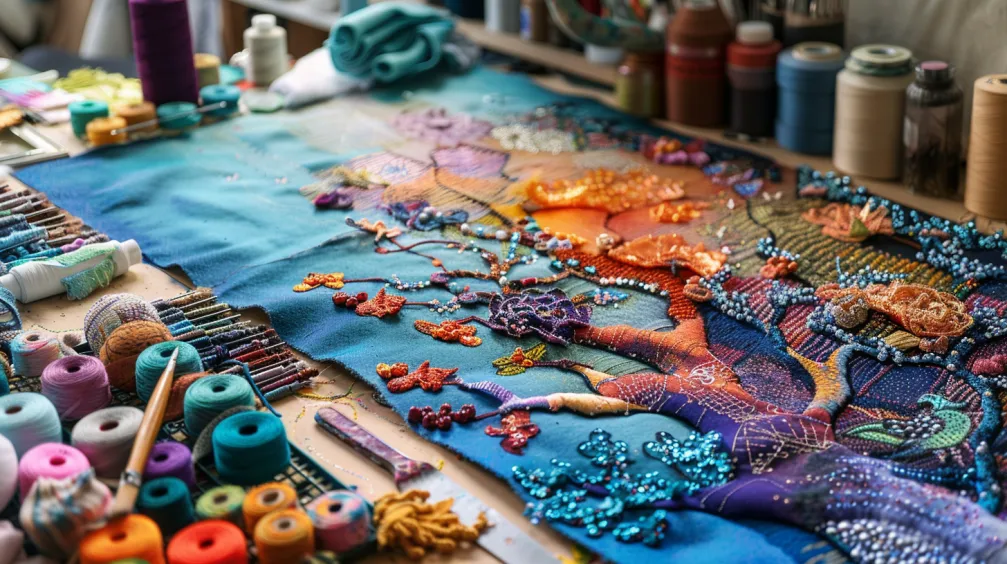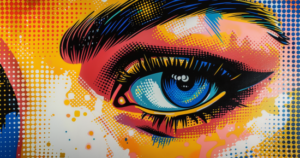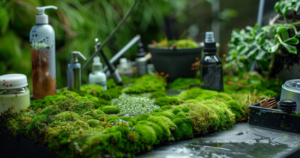Fabric art is a fantastic way to showcase your creativity and add a unique touch to your wardrobe or home. You have a wealth of ideas and techniques available for your upcoming projects, guaranteeing that your creative spark remains vibrant. From wall hangings to intricate quilts, fabric art spans a wide array of styles to match your tastes and skill level.
The World of Fabric Art Ideas
Dive into the world of fabric art and explore the endless possibilities it offers. You can repurpose leftover fabric scraps from previous projects to create one-of-a-kind pieces like bags, wallets, and pillows. Or, get inspired by browsing fabric art ideas on Pinterest, where you’ll find an array of unique designs and techniques to try. No matter your artistic vision, fabric art allows you to express your personality and make something truly special.
As you embark on your fabric art journey, remember to have fun and keep learning. Whether it’s mastering a new stitch, experimenting with colors and patterns, or exploring unique techniques, fabric art is a delightful way to nurture your creativity and bring your ideas to life.
History of Fabric Art
Fabric art, also known as textile art, has a rich history dating back over thousands of years. It encompasses a wide variety of techniques, including weaving, knitting, quilting, and embroidery, to name a few.
Let’s take a brief journey through the history of fabric art and explore how various cultures have contributed to its development.
- Ancient times: Weaving is believed to have been invented more than 27,000 years ago, making it one of the oldest forms of human technology. Early examples of fabric art have been discovered in various regions around the world, including Egypt, China, and Mesopotamia.
- Medieval Europe: During the Middle Ages, textile art flourished in Europe, and stunning pieces of fabric art, such as tapestries and embroidered items, were created. These works of art were not just decorative but also served practical purposes, such as insulating castle walls and displaying the wealth of the aristocracy.
- Silk Road: The Silk Road trade routes played a crucial role in the spread of luxurious fabrics and textile art techniques across Asia, Africa, and Europe. The exchange of ideas and valuable materials like silk facilitated the development of unique fabric art styles in various regions.
- Modern times: Over the past century, fabric art has experienced a renaissance, with artists pushing the boundaries of what can be considered a textile and how a textile can be used in a piece of art. This has led to a wealth of fabric art ideas and the incorporation of diverse materials and techniques in contemporary textile creations.
While this overview only scratches the surface of the deep history of fabric art, it’s certainly fascinating to see how ancient techniques have evolved and merged with modern ideas to produce a stunning array of contemporary textile masterpieces.
Essential Materials and Tools

Choosing the Right Fabrics
When starting your fabric art journey, it’s important to choose the right fabrics that suit your project. Opt for high-quality fabrics to enhance your art pieces. Natural fibers like cotton, linen, and silk are great choices because of their versatility and texture.
However, you can also consider using synthetic fabrics, such as polyester or nylon, depending on your desired effect. Don’t be afraid to mix various fabric types to create unique fabric art ideas. For a suitable selection of fabric colors, refer to the primary colors.
Basic Tools for Beginners
As a beginner, there are a few essential tools that you’ll need to get started. Make sure to have:
- Scissors: Invest in a good pair of fabric scissors for cutting fabric and threads with precision.
- Fabric Markers or Pencils: These will help you trace patterns and create guidelines on your fabrics.
- Ruler and Measuring Tape: This helps to ensure accurate measurements for your projects.
- Sewing or Quilting Needles: Choose the appropriate needle size and type based on your fabric and thread.
- Thread: Make sure to use high-quality thread that matches or complements your fabric choice.
- Cutting Mat and Rotary Cutter: These can make cutting your fabrics easier and more accurate.
Remember to keep your working space organized and maintain your tools, so they last longer.
Advanced Tools for Experienced Artists

Once you have gained experience and confidence in creating fabric art, you may want to invest in some advanced tools to take your projects to the next level:
- Sewing Machine: A versatile sewing machine will allow you to create intricate designs with ease.
- Embroidery Machine: This can help you add beautiful embroidery work to your fabric art.
- Serger: This machine can produce professional-looking seams for a finished appearance.
- Fabric Paint and Brushes: Use these to add dynamic visuals and textures to your work through various fabric painting techniques.
- Stencils: Add unique patterns or designs to your fabric with the help of detailed stencils.
As you continue to experiment and try new techniques, you’ll find that investing in the right tools will make your fabric art journey even more enjoyable and fulfilling.
Techniques and Methods
Traditional Fabric Art Techniques
When exploring fabric art ideas, there are plenty of traditional techniques to consider. Some of these have been around for centuries, and they continue to inspire artists today.
- Appliqué: A technique in which pieces of fabric are sewn onto a larger piece to create a design or pattern.
- Embroidery: Hand or machine stitching to create intricate patterns or designs on fabric, often using colored threads.
- Patchwork: A method of sewing small pieces of fabric together to create a larger design, often used in quilt making.
- Batik: A technique of applying wax to areas of fabric, then dyeing it to create bold patterns.
Contemporary Fabric Art Practices
Modern fabric artists are always seeking innovative ways to express themselves. Here are some contemporary fabric art practices you might want to experiment with:
- Freehand Painting: Using acrylic fabric paint or textile paint, you can create unique designs on fabric by painting directly onto it.
- Spray Painting: Apply fabric paint with a spray bottle for an airbrush effect. This technique can be used with stencils or freehand for a more abstract look.
- Stencil Painting: Using pre-cut stencils and templates can help you achieve precise and consistent designs on fabric quickly and easily.
- Tie-dye with Fabric Paint: Creating vibrant, swirling patterns by twisting and tying fabric before applying paint.
Incorporating Mixed Media
Don’t be afraid to incorporate mixed media elements into your fabric art ideas. This can add a unique twist to your projects and make them even more interesting:
- Beadwork: Embellish your fabric art with beads and sequins for added dimension and texture.
- Fabric Collage: Combine various scraps of fabric, ribbon, lace, and other materials to create an interesting and layered design.
- Printmaking: Experiment with block printing or screen printing on fabric to create bold and intricate patterns.
So go ahead, explore these techniques, and see how your creativity takes shape in the world of fabric art. Remember, the key is to have fun, learn, and enjoy the process.
Fabric Art Project Inspirations
Home Decor Projects
You can transform your living space with unique fabric art ideas, creating personalized items for your home. For example, design contemporary fabric art projects that involve fun and easy colorful fabric books. Another idea is incorporating mixed media collages by layering textiles, paper, and paint. This technique adds depth and texture to your home decor while showcasing your creativity.
- Create fabric wall hangings to enliven a room
- Sew decorative pillow covers with bold patterns
- Whip up a cozy quilt to cherish on your bed
Bringing a fresh wave of creativity into your home decor can be both exhilarating and rejuvenating. There are countless ways to infuse your living space with charm and character that reflect your personal style.
Wearable Fabric Art
Experiment with fabric art ideas to create unique wearable pieces, such as:
- Scarves: Design one-of-a-kind scarves using vibrant prints or stunning embroidery techniques.
- Bags: Customize tote bags, clutches, or even backpacks with interesting patterns and textures.
- Jewelry: Get inspired by fiber jewelry ideas to craft exquisite accessories made of fabric, beads, and other elements.
Fashion accessories like these not only express your personal style but also make excellent conversation starters.
Fabric Art for Gifting
Share your love for fabric art by making handmade gifts for friends and family. Here are a few easy fabric crafts ideassuitable for gifting:
- Lavender sachets: Fill small fabric pouches with dried lavender for a soothing scent.
- Travel accessories: Sew fabric passport covers, luggage tags, or travel jewelry pouches.
- Table decor: Customize placemats, napkins, or table runners with embroidered designs.
These heartfelt, personalized gifts are bound to make your loved ones feel special and appreciated.
What can i make with upholstery samples?
With upholstery samples, you can make pillows, patchwork quilts, tote bags, wallets, coasters, chair cushions, small upholstery projects, and creative home decor items.
How do you make fabric bookmark?
Cut fabric into a strip, fold edges inward, iron flat. Place interfacing between folded layers for stiffness, sew around edges. Add embellishments or ribbon as desired.
How do you copy a drawing onto fabric?
To copy a drawing onto fabric, use a lightbox or a sunny window to trace the design with a fabric pencil or tailor’s chalk. Alternatively, use transfer paper or a water-soluble stabilizer with the design printed on it, pinning it onto the fabric and tracing over the lines.







